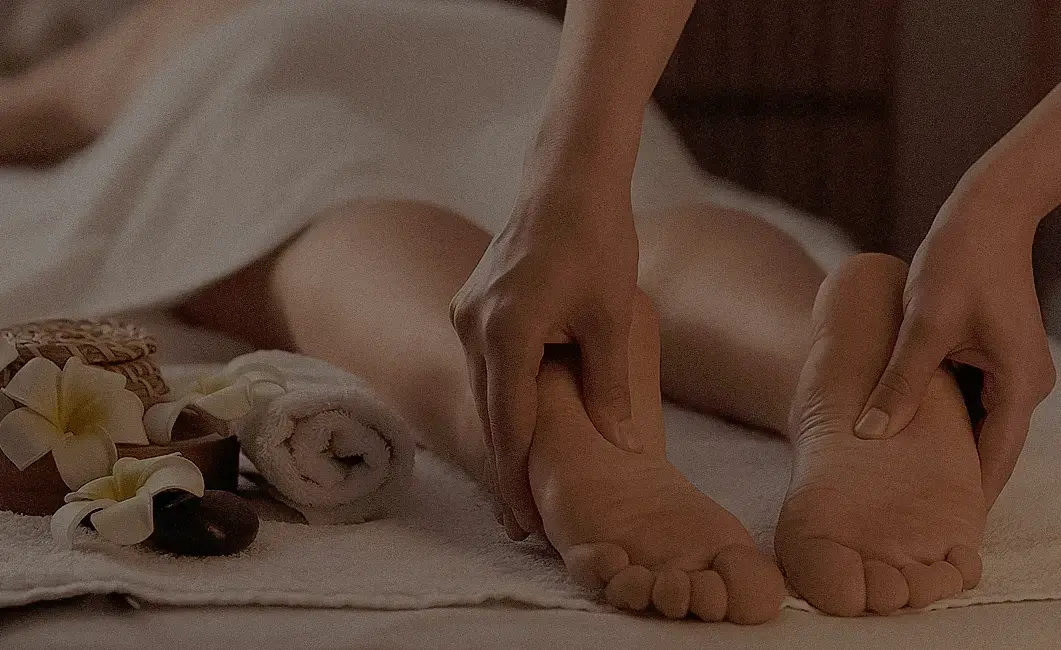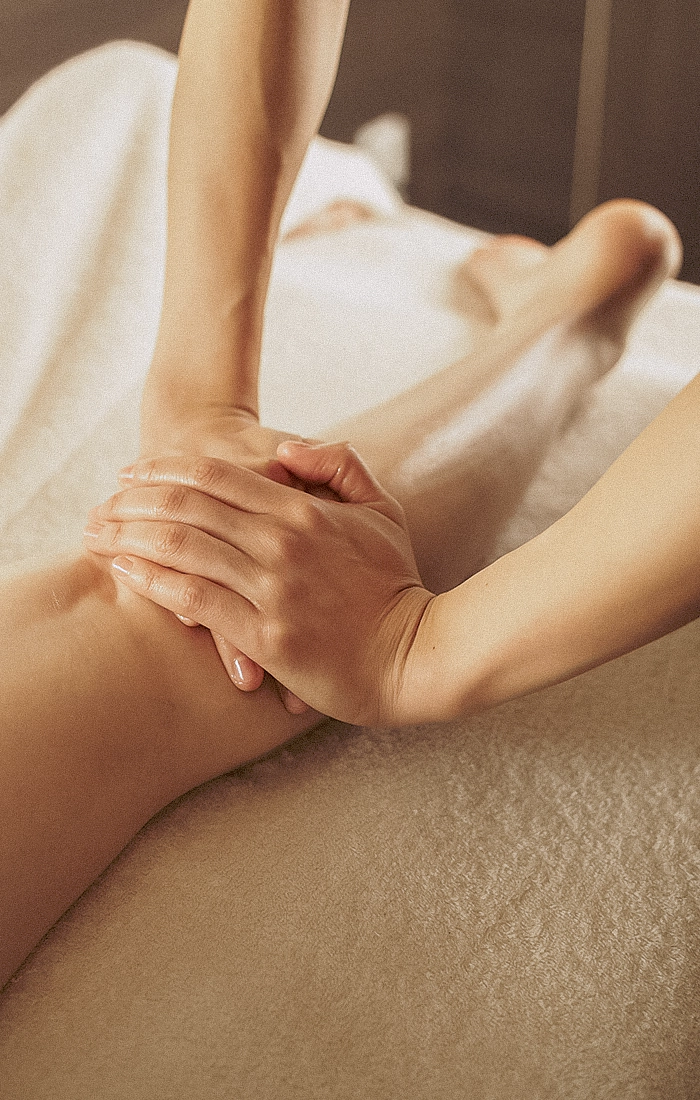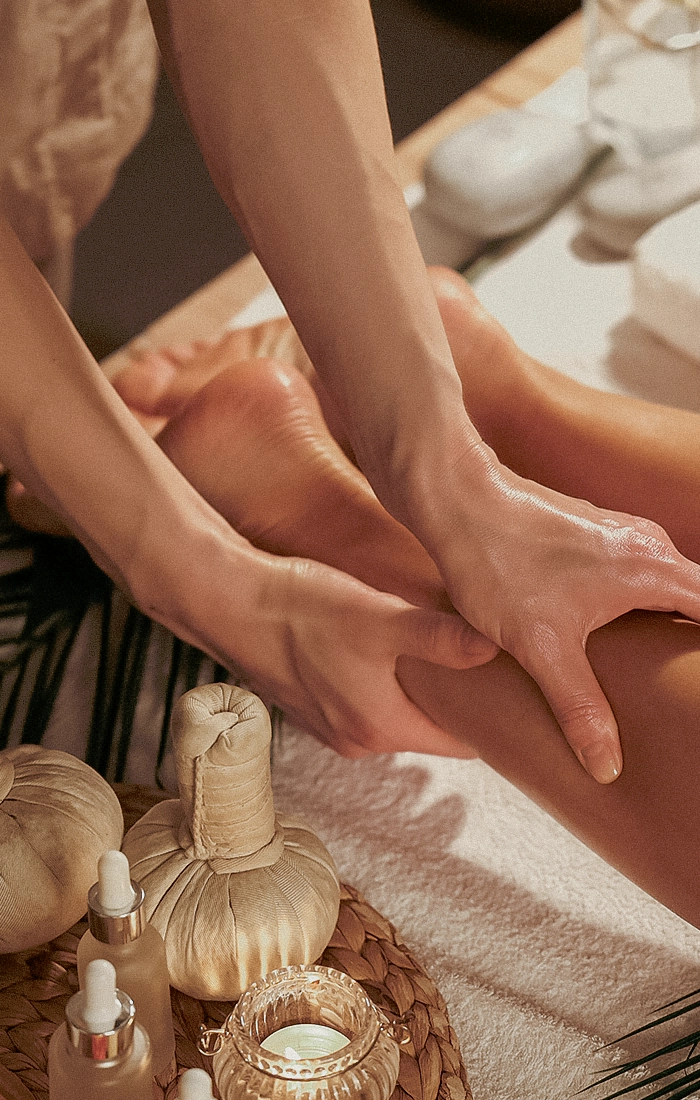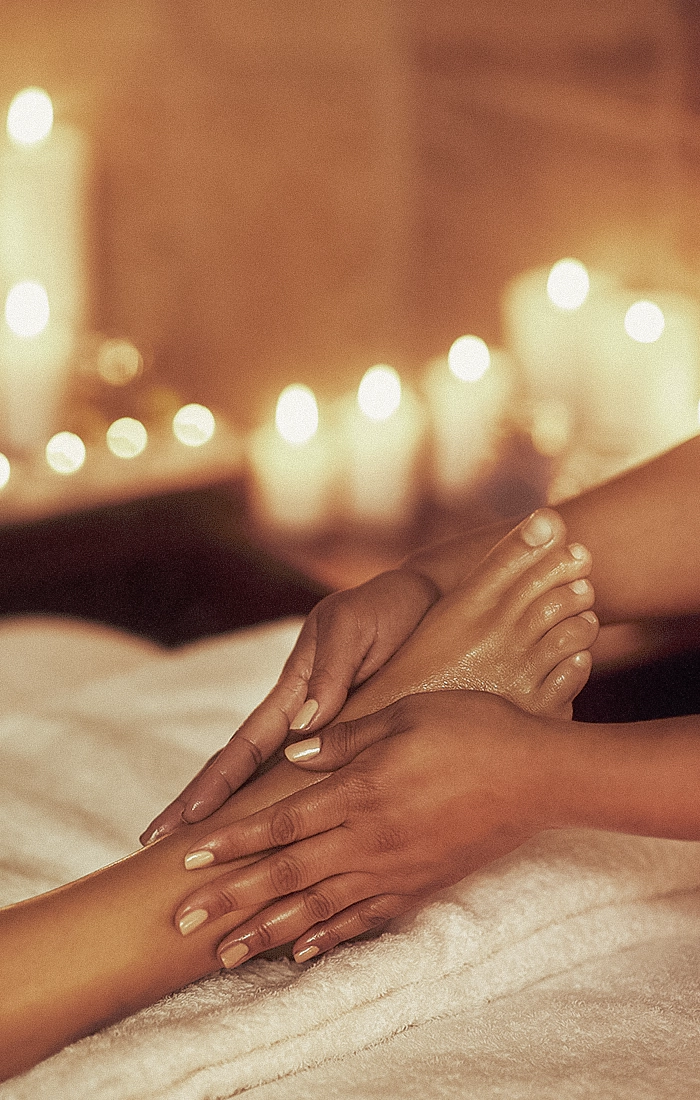No products in the cart.

Reflexology vs. Traditional Foot Massage: Which One Is Right for You?
Two popular methods—reflexology and traditional foot massage—offer distinct approaches to wellness. Understanding their differences can help you choose the best treatment for your needs.
What is Reflexology?
Reflexology is a specialized technique that focuses on applying pressure to specific points on the feet. These points, known as reflex zones, correspond to different organs, glands, and systems in the body.
Foot massages are widely known for their ability to promote relaxation and alleviate tension, but not all techniques are the same.


Key Features of Reflexology
- Targeted Approach: Reflexologists map out pressure points on the feet that align with various parts of the body.
- Therapeutic Benefits: Reflexology aims to improve overall health by stimulating these reflex zones to balance energy flow.
- Holistic Wellness: This method supports stress relief, improved circulation, and organ function.
Who Should Try Reflexology?
Reflexology is ideal for those looking to address specific health concerns, such as:
- Chronic pain or tension
- Digestive issues
- Sleep disorders
- Stress-related conditions
What is a Traditional Foot Massage?
Traditional foot massage, on the other hand, focuses on relaxation and relieving tension in the muscles of the feet. It involves various techniques, such as kneading, stroking, and stretching.
Key Features of Traditional Foot Massage
- General Relaxation: Aimed at soothing tired or aching feet.
- Muscle Relief: Techniques are designed to loosen tight muscles and improve flexibility.
- Localized Focus: Unlike reflexology, traditional massage doesn’t connect specific points to other parts of the body.
Who Should Try Traditional Foot Massage?
This method is perfect for those seeking:
- Stress relief after a long day
- Relief from foot pain or discomfort
- Improved circulation in the lower extremities
Comparing Reflexology and Traditional Foot Massage
Focus
- Reflexology:
Reflexology centers around stimulating specific reflex zones on the feet that correspond to various organs, glands, and systems throughout the body. This approach views the feet as a map to holistic wellness, with the goal of addressing imbalances in energy flow and promoting overall health. Reflexology doesn’t just aim to relax the feet—it targets the entire body through these pressure points. - Traditional Foot Massage:
This method focuses solely on the feet, aiming to relieve tension and soothe sore muscles. Unlike reflexology, it doesn’t connect specific areas of the feet to other body systems. The primary purpose is to relax and rejuvenate the feet after physical strain, improve local circulation, and enhance flexibility in the foot muscles.
- Reflexology:
Technique
- Reflexology:
Practitioners use a systematic approach, applying firm but precise pressure to reflex points on the feet. These techniques are designed to stimulate nerve pathways and improve communication between different body parts and the brain. Reflexology sessions often feel more structured and targeted compared to a general massage. - Traditional Foot Massage:
A traditional foot massage involves a variety of movements such as kneading, rolling, stroking, and stretching. These techniques focus on releasing tight muscles, reducing stiffness, and providing an immediate sense of relaxation. It is less structured and more fluid, aimed at delivering a soothing experience.
- Reflexology:
Purpose
- Reflexology:
Reflexology is intended for holistic healing. It aims to restore balance, improve organ function, enhance circulation, and reduce stress by addressing reflex zones. People seeking a deeper connection between their feet and overall wellness often prefer reflexology. - Traditional Foot Massage:
This approach prioritizes immediate comfort and relaxation. It’s designed to relieve tired, aching feet, improve local blood flow, and promote general well-being after physical exertion. It is ideal for those looking for a straightforward, stress-relieving experience.
- Reflexology:
Best For
- Reflexology:
- Individuals with chronic conditions like headaches, digestive issues, or hormonal imbalances.
- Those seeking stress relief that benefits their entire body, not just the feet.
- People interested in holistic health and energy balance.
- Traditional Foot Massage:
- Anyone dealing with soreness, tightness, or fatigue in their feet.
- People who stand or walk for long periods and need localized relief.
- Those looking for a relaxing experience without the therapeutic depth of reflexology.
- Reflexology:


Which One is Right for You?
Choosing between reflexology and traditional foot massage depends on your individual goals, needs, and preferences. Each technique offers unique benefits, making it important to identify what you hope to achieve from the session.
Opt for Reflexology if:
- You have specific health concerns, such as headaches, digestive issues, or chronic stress, and want a therapy that supports overall body wellness.
- You’re seeking a holistic approach to address underlying imbalances in your body by stimulating specific reflex points.
- You’re interested in improving circulation, energy flow, and the function of various internal organs.
- You enjoy a more structured and targeted session with therapeutic effects that go beyond relaxation.
Choose Traditional Foot Massage if:
- You’re looking to unwind and relieve everyday stress with a more general relaxation technique.
- Your primary concern is foot-related, such as soreness, tightness, or fatigue, without a focus on other parts of the body.
- You want to improve the flexibility and comfort of your feet, especially after long periods of standing or walking.
- You prefer a soothing, fluid session that focuses purely on physical relief without addressing deeper systemic concerns.
Tips to Maximize the Benefits of Your Foot Massage
Getting a foot massage is a fantastic way to relax and rejuvenate, but with a few simple tips, you can enhance the overall experience and make the benefits last longer.
Before Your Massage
- Stay Hydrated: Drink water before your session to help flush toxins and improve circulation.
- Wear Comfortable Footwear: Avoid tight shoes or high heels leading up to your appointment to prevent extra strain on your feet.
- Communicate Your Needs: Let your therapist know about specific areas of tension or discomfort to customize the treatment to your needs.
During Your Massage
- Relax Your Mind and Body: Take deep breaths and allow your body to fully relax during the session.
- Pay Attention to Sensations: Notice how different areas of your feet feel as they’re being worked on. This can help you understand tension points and areas needing extra care.
- Ask for Adjustments: If the pressure feels too light or too firm, don’t hesitate to let your therapist know—they’re there to ensure your comfort.
After Your Massage
- Hydrate Again: Drinking water post-massage helps your body remove toxins released during the session.
- Stretch Gently: Light stretching of your ankles and toes can maintain flexibility and relieve lingering tightness.
- Avoid Straining Your Feet: Give your feet a break from standing or intense activities for the rest of the day to let them recover fully.
- Use a Foot Balm: Apply a nourishing foot balm or lotion to keep your skin soft and hydrated.
FAQs About Foot Massage
Yes! Foot massages can improve circulation, relieve tension, and promote relaxation, which supports overall health and well-being.
Foot massages are generally safe, but if you have certain medical conditions like diabetes, blood clots, or foot injuries, consult with a healthcare provider first.
A 30–60 minute session is ideal for relaxation and addressing tension. Shorter sessions can still provide noticeable relief.
Absolutely! Foot massages pair well with full-body massages, or spa treatments for a comprehensive wellness experience.

At Balance Massage, we offer expertly crafted foot massages that blend the benefits of reflexology and traditional techniques. Whether you’re seeking targeted therapy or simple relaxation, our skilled practitioners will help you feel your best. Book your session today and step into a world of relief and rejuvenation!

Leave a Reply